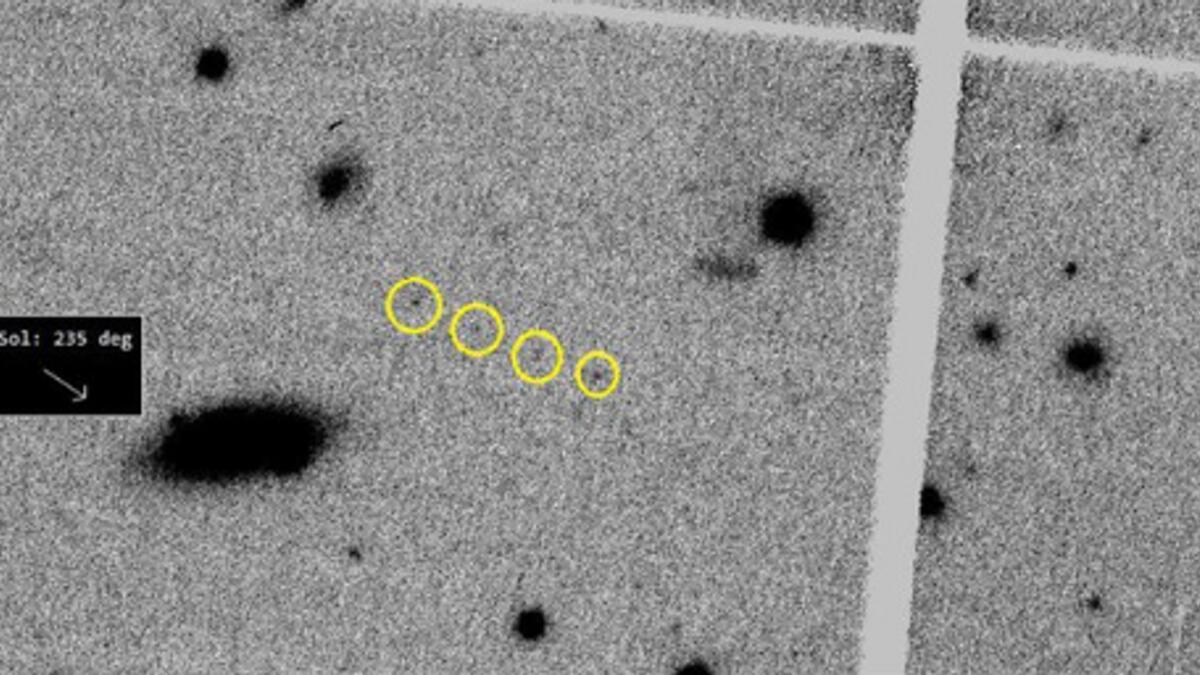A new asteroid was recently discovered within the asteroid belt of the solar system by a team member of the International Astronomical Centre in Abu Dhabi. The discovery was made through the analysis of images provided by a NASA-supported program in collaboration with international partners such as Hardin-Simmons University in Texas, the Pan-STARRS telescope, and the Catalina Sky Survey project. Mohammad Shawkat Odeh, the Director of the centre, identified the asteroid while examining images captured by the Pan-STARRS 2 telescope at the Haleakala Observatory. Following the discovery, an initial discovery certificate was issued to Odeh. The asteroid is temporarily named ‘2022 UY56’ and will remain under this name until further observations are conducted to determine its precise orbit, after which the International Astronomical Union will formally name it.
This recent discovery of a new asteroid is both exciting and significant in the field of astronomy. The asteroid was discovered within the asteroid belt of the solar system by a team member of the International Astronomical Centre in Abu Dhabi. The discovery was made possible through the analysis of images provided by a NASA-supported program in collaboration with various international partners. Mohammad Shawkat Odeh, the Director of the centre, identified the asteroid while examining images captured by the Pan-STARRS 2 telescope at the Haleakala Observatory. The discovery marks a significant achievement in the study of celestial bodies within our solar system.
The asteroid, temporarily named ‘2022 UY56’, will maintain this name until further observations are conducted to determine its precise orbit. This naming convention is common practice in the field of astronomy, allowing for proper identification and tracking of newly discovered celestial objects. The International Astronomical Union will be responsible for formally naming the asteroid once its orbit has been accurately determined. This process ensures that the asteroid is cataloged and tracked effectively within the scientific community.
The collaboration between various international partners, including Hardin-Simmons University in Texas, the Pan-STARRS telescope, and the Catalina Sky Survey project, highlights the importance of global cooperation in astronomical research. The discovery of the new asteroid demonstrates the value of combining resources and expertise to further our understanding of the cosmos. The images captured by the Pan-STARRS 2 telescope played a crucial role in identifying the asteroid, showcasing the advanced technology and capabilities available to astronomers.
The President of the International Astronomical Centre, Khalfan bin Sultan Al Nuaimi, expressed pride in the discovery and emphasized the importance of staying up to date with the latest developments in astronomy. The initial discovery certificate issued to Mohammad Shawkat Odeh signifies a significant milestone in his career and the recognition of his contribution to the field of astronomy. The discovery of the new asteroid serves as a reminder of the vastness of our universe and the ongoing exploration and discovery of celestial objects within it.
In conclusion, the discovery of a new asteroid within the asteroid belt of the solar system is a remarkable achievement in the field of astronomy. The collaboration between international partners and the use of advanced technology in identifying the asteroid demonstrate the importance of global cooperation in scientific research. The temporary naming of the asteroid as ‘2022 UY56’ until its precise orbit is determined is a standard practice that ensures proper cataloging and tracking of celestial objects. This discovery highlights the ongoing exploration and discovery of celestial bodies within our solar system, furthering our understanding of the cosmos and our place within it.











